Last updated on June 2nd, 2023 at 07:47 am
Beware of the Beast!
Something is wrong. But what is it? You know something doesn’t add up but you can’t pinpoint what it is. The argument you just heard didn’t sit well with you. Even though it came from your boss, this time you knew he wasn’t right.
I am here to help you figure it out! Ever since I discovered this jewel life has become much more bearable and peaceful. Our ability to dialogue as humans come with an additional task of understanding another’s point of view and choosing whether to act or not act on it. As such ‘truth’ is an important word in the human kingdom as it can make or unmake a situation. But the problem is someone might say your truth is not my truth. Or your 6 is my 9. Well, let’s not get pedantic yet.
Instead of stressing over definitions of truth rather look at the paths to the truth! Enough of the philosophies — time for conversations — as I am having with you now. Every conversation has a structure, whether it is to persuade, inform, or entertain. Either way, it HAS TO MAKE SENSE. The basic unit of any conversation is LOGIC. Simply put, LOGIC is the study of correct reasoning, especially as it involves the drawing of inferences (conclusions). Therefore, to say something is logical means a correct (or reliable) way was used to arrive at that point.
Fallacies can be easy to spot!

A safe way to identify the logical is to do the reverse – know what makes an argument illogical. Once we can identify what makes an argument illogical, we are indirectly getting closer to the logical. The name given to the way of reasoning that makes an argument illogical is called committing a logical fallacy.
A logical fallacy is an error in reasoning. It makes an argument less effective and convincing. Logical fallacies deceptively look logical until you apply the rules of logic only to realize that they are not.
There are two types of logical fallacies: formal and informal.
Formal fallacies are fallacies that are based on the structure(form) of an argument. Informal fallacies on the hand are based on the content and context of the argument. It is this latter type of fallacy that easily misleads us in everyday conversations and arguments.
Therefore Beware of the Beast. The Beast falls under the umbrella of informal fallacies.
The Beast is an acronym for :
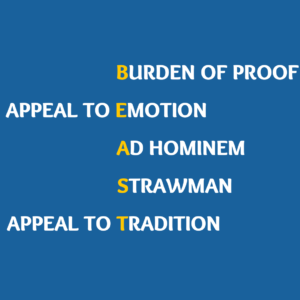
Let’s break them down.
Burden of Proof :
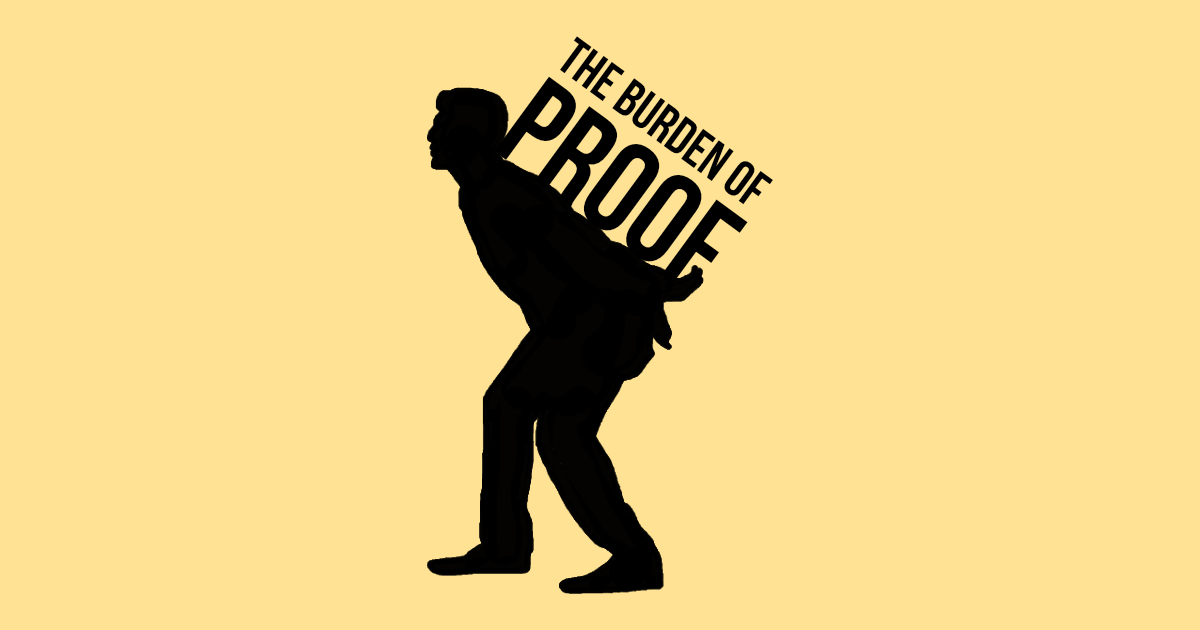
When a claim is made whose responsibility is it to defend the claim? Is it the one who made the claim or the one who has been told the claim? Well, it is the person who made the claim who has the responsibility of defending it. Hence we say, the person who made the claim has the Burden of Proof.
The fallacy: The Burden of Proof fallacy is committed when the owner of the claim shifts the burden of proof to another person who didn’t make the claim.
Here are some examples of the Burden of Proof fallacy.

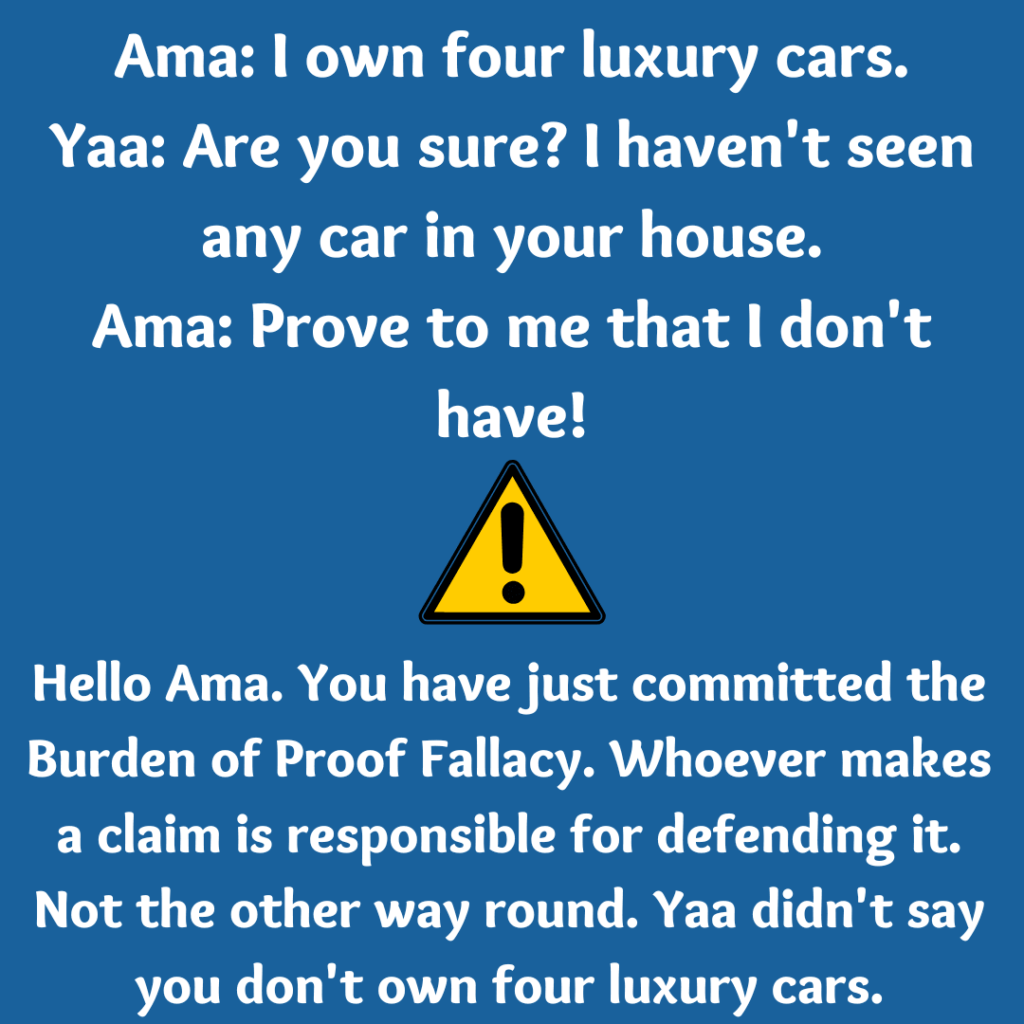
Appeal to Emotion

A beautiful part of the human experience is our ability to express and understand emotions. Different emotions
trigger different responses. Fear triggers panic, love triggers acceptance and joy, disappointment triggers hurt, withdrawal, etc. Knowing that some emotions trigger a particular response, our emotions can be deliberately manipulated to achieve a purpose or cause us to accept or reject an idea or claim.
The fallacy: The Appeal to Emotion fallacy occurs when a claim and its conclusion are not based on the content/facts of the argument but based on the emotions the claimer attaches to the claim. In other words, the person making the argument manipulates the recipient’s emotions to win an argument. The argument was not based on natural facts but on relying on making the recipient feel a particular emotion.
Here are some examples of the Appeal to Emotion fallacy.
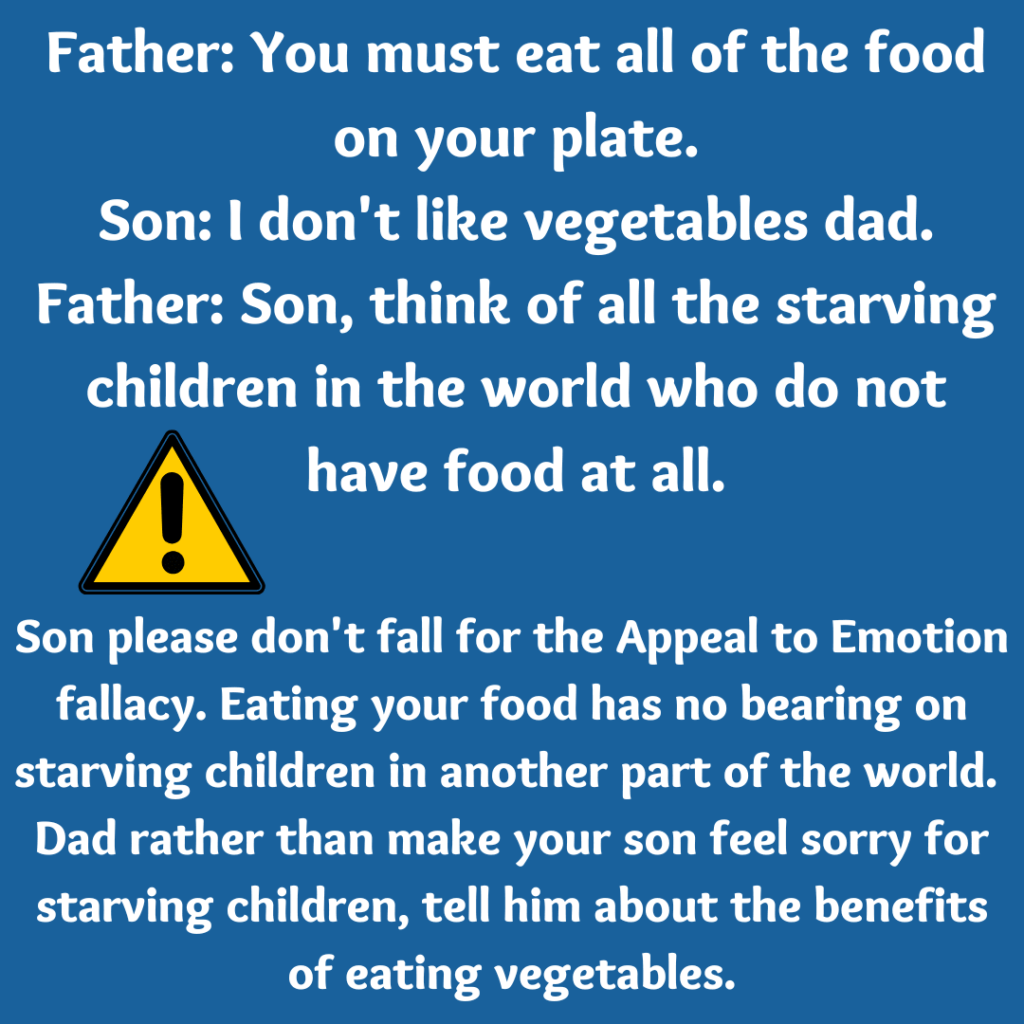

Ad Hominem

Ad Hominem is the Latin phrase for ‘Against The Man.” Against The Man’ here means attacking someone verbally. It varies from attacking the personality of someone to his/her status or even downright derogation.
The fallacy: The Ad Hominem fallacy is committed when a proponent of an argument/claim attacks the personality or status of an opponent or recipient of the claim. The attack may come in the form of using the negative records of an opponent to
dismiss a claim or accept it. This tactic is meant to distract the audience by focusing on the personality of the opponent rather than the argument at hand.
Here are some examples of the Ad Hominem fallacy.


Straw Man

Have you ever had that moment in an argument when your opponent completely missed or misrepresented your point? Straw Man has its origin on the farm. Farmers use a strawman, also commonly known as a scarecrow – a human-like figurine stuffed with straw and erected on a pole to ward off birds from feasting on the farm.
When the birds see the straw man they advise themselves not to get close to it because they think it is an actual human being and would not want any confrontation with the human.
The fallacy: Straw Man occurs when one takes an opponent’s claim (actual human), twists it into something else (strawman), and argues against the twisted form of the original claim. Instead of arguing against the claim raised by an opponent you rather argue against a similar form of the claim that you have created yourself.
Simply put, your opponent claimed ABC but instead of you arguing against ABC, you change ABC into ABCD and then argue against ABCD which your opponent never made. Sometimes your opponent claims 123 but you don’t argue against that. Instead, you change 123 into ABC and argue against ABC. This tactic might be committed deliberately or undeliberately.
Here are some examples of the Straw Man fallacy.
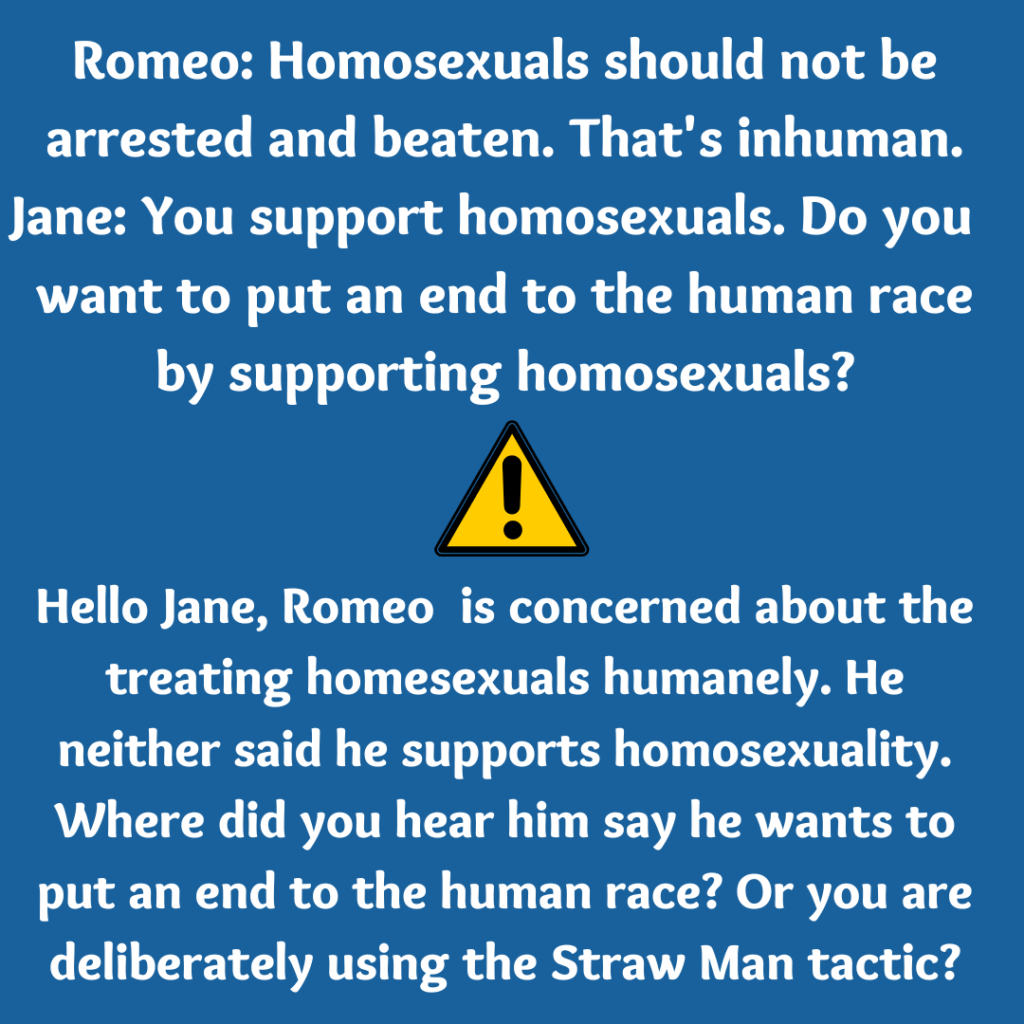

Appeal to Tradition

Naturally, it feels like tradition always has it right, that the longer something has existed proves that it is true or the correct way of doing things. Fare enough, tradition preserves history and culture.
The fallacy: This occurs when a claim is considered right or to be accepted on the basis that it has existed as far as the near or far past. It says that this claim is true because we have always had/done it that way. Case in point, all three stories in my previous blog post “No Monkey Games” are examples of the usage of Appeal to Tradition.
Here are some examples of the Appeal to Tradition fallacy.

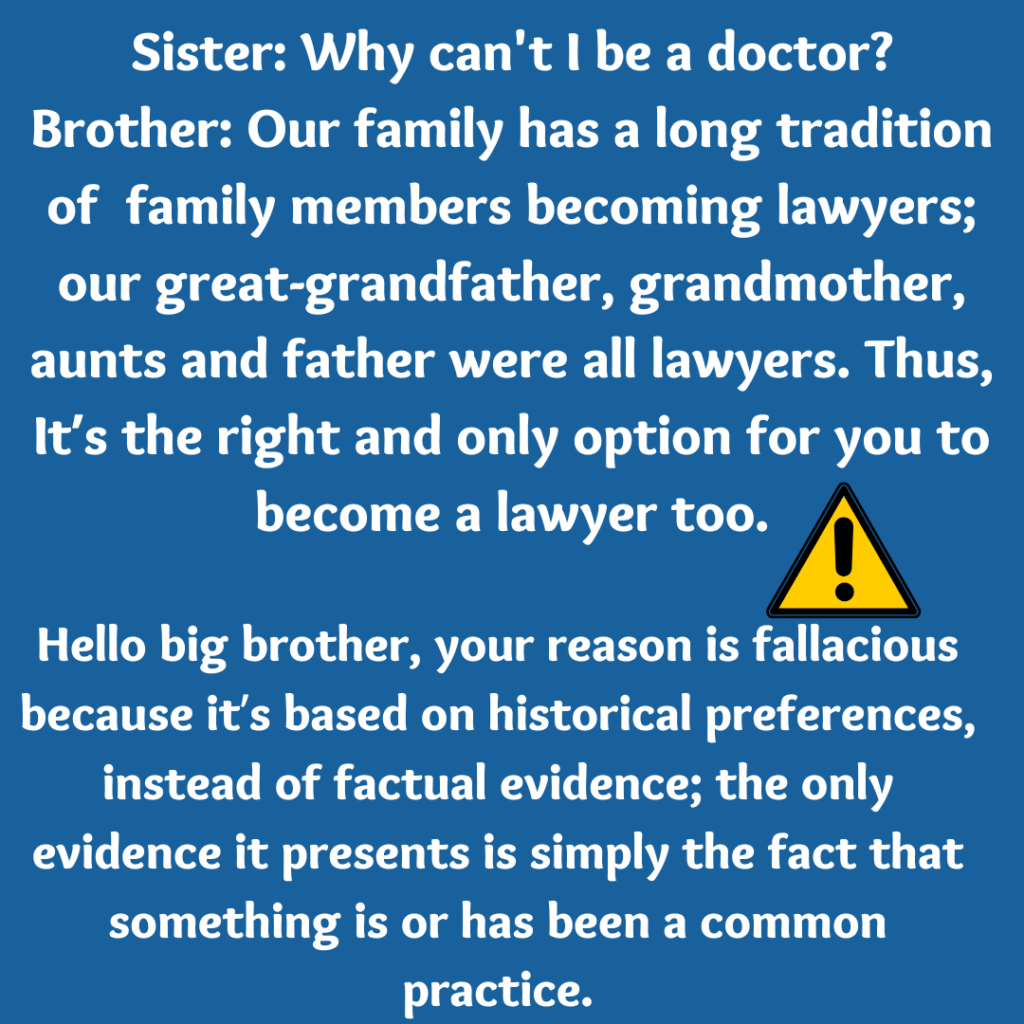
Beware of these fallacies!
If you are interested in learning more about other kinds of logical fallacies visit logicallyfallacious.com.
What’s next in Peter’s Box? ¡Hasta luego amigos!






Cool with pure understand in
😉
What was your favourite fallacy?
Great write up Perro. Very insightful and educative. We need to be logical rather than being sentimantal. Most Ghanaians are very emotional and it’s really affecting our growth. Thanks for the piece.
Dear Kingsley, emotions are not inherently bad. We are humans, and we will undoubtedly express ourselves in some way. The issue arises when our emotions become the sole criterion for making decisions.
Dear Peter:
I correctly agree with you but we are too emotional. As you said sometimes you need to sympathize with others but when it becomes so much or all the time, that is where the issue is. Thanks, bro.